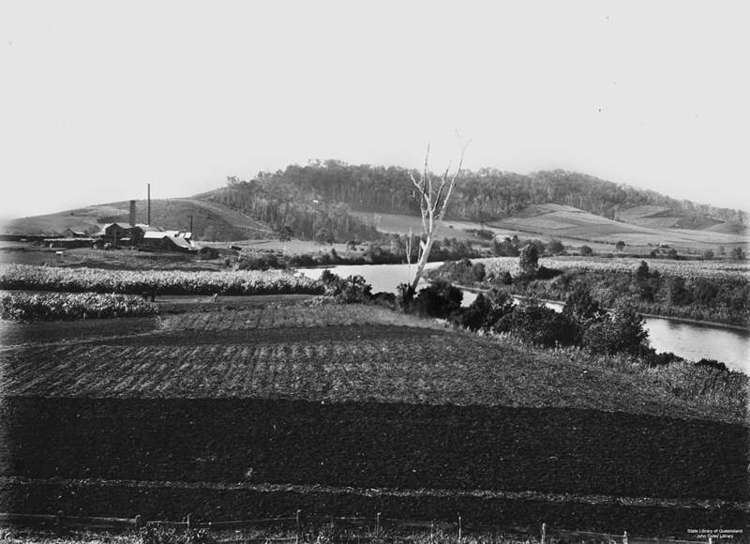Population 8,244 (2011 census) Postcode(s) 4207 State electorate(s) Waterford Local time Thursday 6:07 AM | Established 1866 Postal code 4207 | |
 | ||
Weather 22°C, Wind S at 10 km/h, 90% Humidity Points of interest Beenleigh Historical Village, Yugambeh Museum, Logan River Parklands, Hugh Muntz Park | ||
Beenleigh is a town and a suburb in the City of Logan, Queensland, Australia. At the 2011 Australian Census Beenleigh recorded a population of 8,244. A government survey for the new town was conducted in 1866. The town is the terminus for the Beenleigh railway line which first opening in 1885 and a stop on the South Coast railway line which reached Southport in 1889. Beenleigh was the administrative centre of the former Shire of Albert. It is known for the heritage-listed tourist attraction called the Beenleigh Artisan Distillery.
Contents
- Map of Beenleigh QLD 4207 Australia
- Geography
- Demographics
- History
- Heritage listings
- Facilities
- Transport
- Education
- Attractions
- Events
- Sport and recreation
- References
Map of Beenleigh QLD 4207, Australia
Geography
Beenleigh and adjoining suburbs are located near the confluence of the Logan and Albert rivers. The residential and urban suburb lies southwest of the Pacific Motorway after it crosses the Logan River and is crossed by the Gold Coast railway line. Logan River Parklands contains a boat ramp, barbeques and a picnic area. Whilst it was once a stand-alone town built on sugar and home to Australia's oldest rum distillery built in 1864, increasing development in South East Queensland since the 1980s has seen it enveloped by Brisbane and the Gold Coast.
Demographics
In the 2011 census, Beenleigh recorded a population of 8,244 people, 49.5% female and 50.5% male. The median age of the Beenleigh population was 34 years, compared to the national median age of 37. 66.9% of people living in Beenleigh were born in Australia. The other top responses for country of birth were New Zealand 8.1%, England 3.4%, Philippines 1.1%, Brazil 0.6%, Germany 0.5%. 81.5% of people spoke only English at home; the next most common languages were 0.7% Portuguese, 0.6% Tagalog, 0.6% Vietnamese, 0.4% Spanish, 0.3% German.
History
This is the Yugambeh People's country, predating European settlement by tens of thousands of years. Their Yugambeh language and heritage survive and is a testament to the Yugambeh Museum located in the town.
Beenleigh was first colonised in the 1860s, with the first permanent European settlement occurring by John Davy and Frank Gooding who named their sugar cane plantation Beenleigh in memory of their family estate in Devonshire, England. The first sugar cane mill was built in 1867 and by 1885 another 29 were operational.
Beenleigh Post Office opened on 1August 1867.
Commercial dairying in the area began in 1889. Beenleigh State School was opened on 6 February 1871.
The Beenleigh Memorial Park was dedicated on 21 August 1925.
The abattoir was established in 1952 for beef production and is still one of the largest industries in Beenleigh. Beenleigh State High School opened on 29 January 1963. Beenleigh Special School opened on 1 January 1981.
Beenleigh was the centre of the Shire of Albert, which also included the suburbs of Eagleby, Alberton, Mt Warren Park, Windaroo, Edens Landing, Holmview, Pimpama, and Jacobs Well. In 1995, Albert Shire was dissolved and Beenleigh and the surrounding suburbs were then amalgamated into City of Gold Coast. In 2008 these suburbs were transferred from Gold Coast City to City of Logan (despite protests from locals who voted against being part of Logan).
Heritage listings
Beenleigh has a number of heritage-listed sites, including:
Facilities
Still predominately a self-sufficient town with expanding retail and commercial areas close by, Beenleigh is home to three shopping centres with Coles Supermarkets, Woolworths, BI-LO, Big W, Aldi and a Mitre 10 MEGA.
At the heart of Beenleigh stands the Southern District Court complex, first established in 1871. For many years, the court was constituted solely of three magistrates, this changed with the allocation of a permanent sitting District Court of Queensland Judge in 1998. The first presiding District Court Judge in Beenleigh was Judge O'Brien. Recently, the Southern District Court complex has played an integral role in the development of the progressive Drug Court.
Beenleigh Mitre 10 MEGA opened in 2004 it was the company's first Australian MEGA store, it employs over 200 people.
Day care facilities are available at the Lutheran Beenleigh Family Day Care Scheme.
Transport
Beenleigh is situated on the Pacific Motorway. Queensland Rail City network provides frequent services to Brisbane and the Gold Coast via the Beenleigh railway line at the centrally located Beenleigh railway station.
Education
There are three major high schools within the immediate area of Beenleigh, including Beenleigh State High School, as well as many primary schools. The town has its own library, community centre and two theatres (Crete Street Theatre and Phoenix Ensemble).
Attractions
The Beenleigh Historical Village preserves twenty historic buildings and houses a number of collections of historic material from the region. The town is also home to the Beenleigh Artisan Distillers, Australia's oldest rum distillery, Yugambeh Language and Research Centre, Poppy's Chocolates and Windaroo Organic Cottage just 5 minutes out of town.
Events
Social events of note are the annual Rum, Rump and Rhumba Festival, Eats & Beats Food Trucks and the Beenleigh Show.
Sport and recreation
Sporting facilities that are represented in Beenleigh cover baseball, soccer, BMX, football, tennis, swimming, Netball and roller derby. Beenleigh enjoys access to the Logan River via boat ramp located near the northern bridge on the Pacific Motorway.
